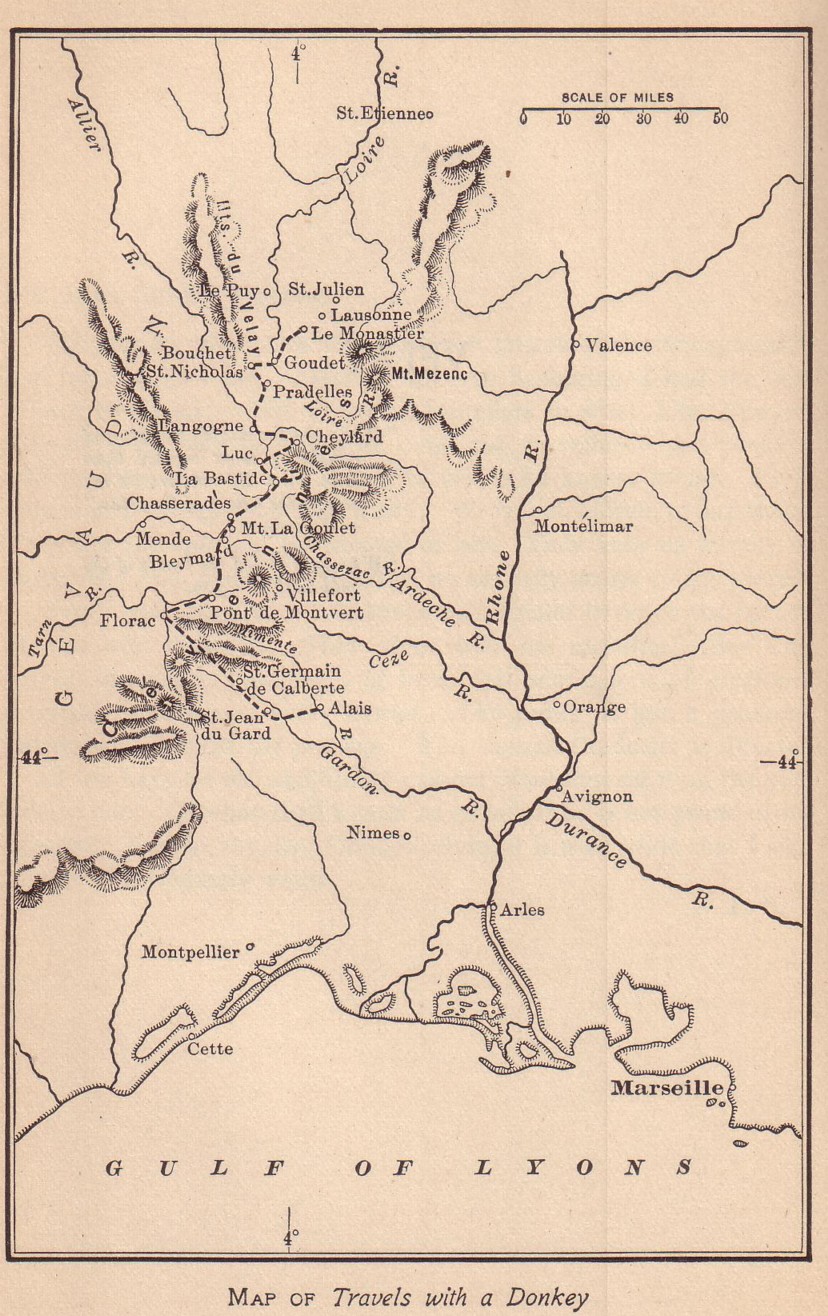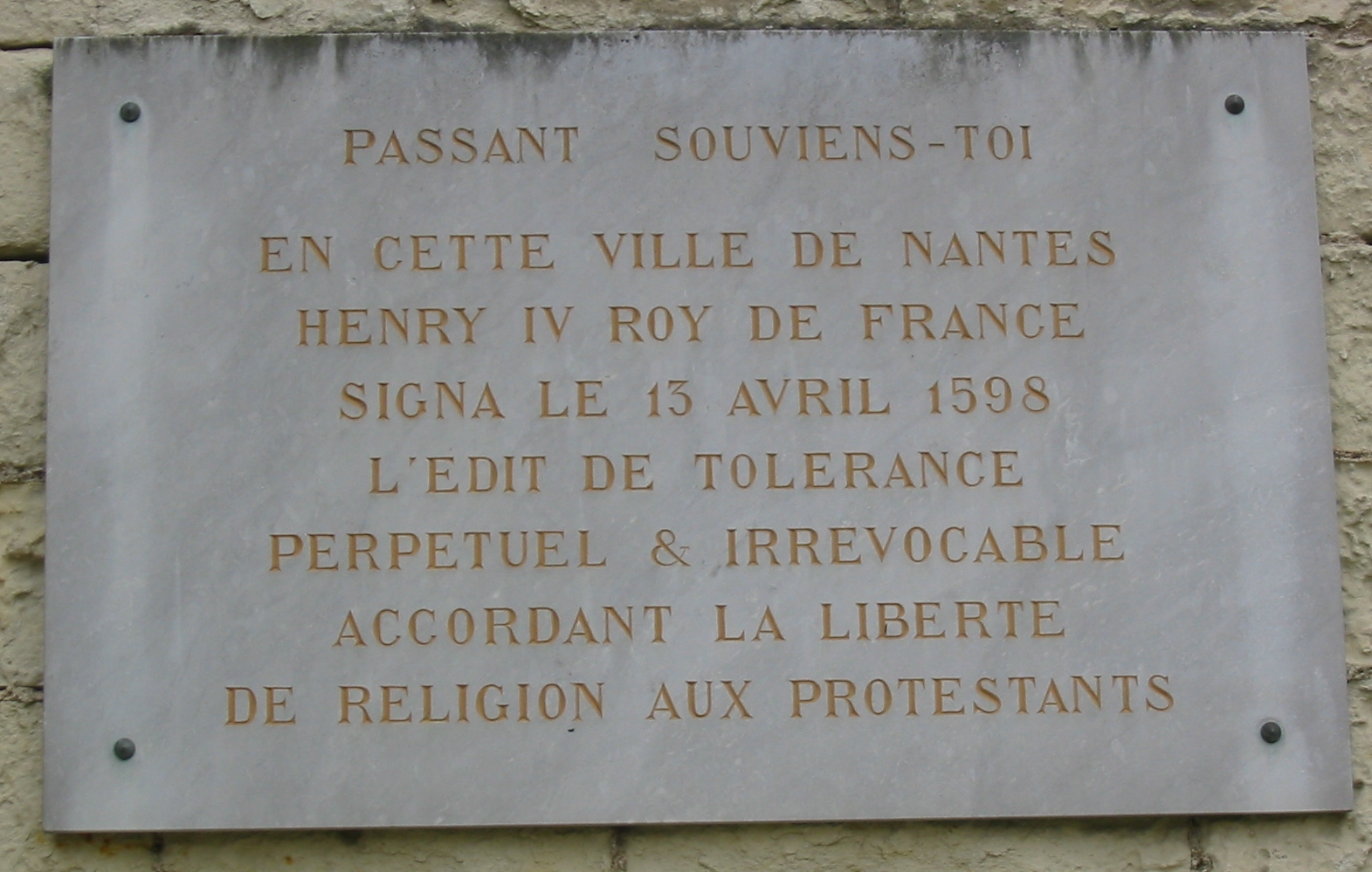|
Florac
Florac is a former commune of the Lozère department in southern France. On 1 January 2016, it was merged into the new commune of Florac-Trois-Rivières. History Medieval Raymond of Anduze held the barony of Florac and is recorded as using the castle there in the 13th century. In 1363 local-born Pope Urban V lent the town 300 florins for the construction of ramparts. Such defences were not at all unusual and offered desirable security and protection for the townspeople. These medieval city walls finally came down in 1629 after the Edict of Alès which, despite allowing some concessions for Huguenots, insisted on the pulling down of fortifications at perceived 'strongholds'. 19th century Florac was visited by a young Robert Louis Stevenson and features as a chapter in his droll Victorian bestseller ''Travels with a Donkey in the Cévennes'' (1879). The Robert Louis Stevenson Trail (GR 70), a popular long-distance path following Stevenson's approximate route, runs through t ... [...More Info...] [...Related Items...] OR: [Wikipedia] [Google] [Baidu] |
Lozère
Lozère (; oc, Losera ) is a landlocked department in the region of Occitanie in Southern France, located near the Massif Central, bounded to the northeast by Haute-Loire, to the east by Ardèche, to the south by Gard, to the west by Aveyron, and the northwest by Cantal. It is named after Mont Lozère. With 76,604 inhabitants as of 2019,Populations légales 2019: 48 Lozère INSEE Lozère is the least populous French department. History Lozère was created in 1790 during the , when the whole of was divided into de ...[...More Info...] [...Related Items...] OR: [Wikipedia] [Google] [Baidu] |
GR 70
The GR 70, also known as the Chemin de Stevenson or the Robert Louis Stevenson Trail, is a Grande Randonnée (long-distance footpath) that runs for approximately through the French departments of Haute-Loire, Lozère and Gard in a generally north–south direction from Le Monastier-sur-Gazeille to Saint-Jean-du-Gard. It follows approximately the route taken by Robert Louis Stevenson in 1878, a journey described in his book ''Travels with a Donkey in the Cévennes''. Although it is not on the formal route, many hikers begin at Le-Puy-en-Velay and walk to Le Monastier-sur-Gazeille via a section of the GR 430. Similarly, many walkers continue beyond the official end-point of Saint-Jean-du-Gard to Alès Alès (; oc, Alès) is a Communes of France, commune in the Gard Departments of France, department in the Occitania (administrative region), Occitanie regions of France, region in southern France. It is one of the Subprefectures in France, su ... via sections of the GR 61 and G ... [...More Info...] [...Related Items...] OR: [Wikipedia] [Google] [Baidu] |
Causse Méjean
Causse Méjean is a limestone plateau in the Lozère department, in southern France. It is a part of The Causses and the Cévennes, Mediterranean agro-pastoral Cultural Landscape UNESCO World Heritage Site. Communes Causse Méjan is part of 13 communes in Lozère: * Hures-la-Parade * Meyrueis * Les Vignes * Montbrun * Florac * Le Mas-Saint-Chély * Gatuzières * Fraissinet-de-Fourques * Vebron * Saint-Laurent-de-Trèves * Le Rozier * Saint-Pierre-des-Tripiers * La Malène See also * Causses * Gorges du Tarn The Gorges du Tarn ( oc, Gòrjas de Tarn) is a canyon formed by the Tarn (river) between the Causse Méjean and the Causse de Sauveterre, in southern France. The canyon, mainly located in the Lozère ''département'', and partially in the Aveyro ... * Cévennes National Park References Landforms of Lozère Plateaus of Metropolitan France {{Lozère-geo-stub ... [...More Info...] [...Related Items...] OR: [Wikipedia] [Google] [Baidu] |
Travels With A Donkey In The Cévennes
''Travels with a Donkey in the Cévennes'' (1879) is one of Robert Louis Stevenson's earliest published works and is considered a pioneering classic of outdoor literature. Background Stevenson was in his late 20s and still dependent on his parents for support. His journey was designed to provide material for publication while allowing him to distance himself from a love affair with an American woman of which his friends and families did not approve and who had returned to her husband in California. ''Travels'' recounts Stevenson's 12-day, solo hiking journey through the sparsely populated and impoverished areas of the Cévennes mountains in south-central France in 1878. The terrain, with its barren rocky heather-filled hillsides, he often compared to parts of Scotland. The other principal character is Modestine, a stubborn, manipulative donkey he could never quite master. It is one of the earliest accounts to present hiking and camping outdoors as a recreational activity. It a ... [...More Info...] [...Related Items...] OR: [Wikipedia] [Google] [Baidu] |
French Wars Of Religion
The French Wars of Religion is the term which is used in reference to a period of civil war between French Catholic Church, Catholics and Protestantism, Protestants, commonly called Huguenots, which lasted from 1562 to 1598. According to estimates, between two and four million people died from violence, famine or diseases which were directly caused by the conflict; additionally, the conflict severely damaged the power of the French monarchy. The fighting ended in 1598 when Henry of Navarre, who had converted to Catholicism in 1593, was proclaimed Henry IV of France and issued the Edict of Nantes, which granted substantial rights and freedoms to the Huguenots. However, the Catholics continued to have a hostile opinion of Protestants in general and they also continued to have a hostile opinion of him as a person, and his assassination in 1610 triggered a fresh round of Huguenot rebellions in the 1620s. Tensions between the two religions had been building since the 1530s, exacerba ... [...More Info...] [...Related Items...] OR: [Wikipedia] [Google] [Baidu] |
Catalonia
Catalonia (; ca, Catalunya ; Aranese Occitan: ''Catalonha'' ; es, Cataluña ) is an autonomous community of Spain, designated as a ''nationality'' by its Statute of Autonomy. Most of the territory (except the Val d'Aran) lies on the northeast of the Iberian Peninsula, to the south of the Pyrenees mountain range. Catalonia is administratively divided into four provinces: Barcelona, Girona, Lleida, and Tarragona. The capital and largest city, Barcelona is the second-most populated municipality in Spain and the fifth-most populous urban area in the European Union.Demographia: World Urban Areas – Demographia, April 2018 Current day Catalonia comprises most of the medieval and early modern Principality o ... [...More Info...] [...Related Items...] OR: [Wikipedia] [Google] [Baidu] |
Canada
Canada is a country in North America. Its ten provinces and three territories extend from the Atlantic Ocean to the Pacific Ocean and northward into the Arctic Ocean, covering over , making it the world's second-largest country by total area. Its southern and western border with the United States, stretching , is the world's longest binational land border. Canada's capital is Ottawa, and its three largest metropolitan areas are Toronto, Montreal, and Vancouver. Indigenous peoples have continuously inhabited what is now Canada for thousands of years. Beginning in the 16th century, British and French expeditions explored and later settled along the Atlantic coast. As a consequence of various armed conflicts, France ceded nearly all of its colonies in North America in 1763. In 1867, with the union of three British North American colonies through Confederation, Canada was formed as a federal dominion of four provinces. This began an accretion of provinces an ... [...More Info...] [...Related Items...] OR: [Wikipedia] [Google] [Baidu] |
L'Anse-Saint-Jean, Quebec
L'Anse-Saint-Jean, French for "The Cove of Saint John" is a municipality in the Saguenay–Lac-Saint-Jean region of Quebec, Canada. Its population was 1208 in the Canada 2011 Census. L'Anse-Saint-Jean was founded in 1838 by the Société des Vingt-et-un, a group of lumber prospectors and investors from Charlevoix which was responsible for opening up the Saguenay region to colonization. Le Royaume de L'Anse-Saint-Jean / Kingdom of L'Anse-Saint-Jean It achieved a certain notoriety when its citizens held a referendum on January 21, 1997, to turn the village into the Le Royaume de L'Anse-Saint-Jean (The Kingdom of L'Anse Saint Jean), the continent's first "municipal monarchy." The monarchists won 73.9% of the vote, with Denys Tremblay becoming King Denys I. The king was crowned on June 24, Saint-Jean-Baptiste Day, in the Église Saint-Jean-Baptiste, and announced plans to build a "vegetable oratory," Saint-Jean-du-Millénaire (Saint John of the Millennium). This micronational pro ... [...More Info...] [...Related Items...] OR: [Wikipedia] [Google] [Baidu] |
Edict Of Fontainebleau
The Edict of Fontainebleau (22 October 1685) was an edict issued by French King Louis XIV and is also known as the Revocation of the Edict of Nantes. The Edict of Nantes (1598) had granted Huguenots the right to practice their religion without state persecution. Protestants had lost their independence in places of refuge under Cardinal Richelieu on account of their supposed insubordination, but they continued to live in comparative security and political contentment. From the outset, religious toleration in France had been a royal, rather than popular, policy. The lack of universal adherence to his religion did not sit well with Louis XIV's vision of perfected autocracy.Palmer, ''eo. loc.'' Edict of Nantes The Edict of Nantes had been issued on 13 April 1598 by Henry IV of France and granted the Calvinist Protestants of France, also known as Huguenots, substantial rights in the predominantly-Catholic state. Henry aimed at promoting civil unity by the edict. The edict treated ... [...More Info...] [...Related Items...] OR: [Wikipedia] [Google] [Baidu] |
Institut National De La Statistique Et Des études économiques
The National Institute of Statistics and Economic Studies (french: link=no, Institut national de la statistique et des études économiques), abbreviated INSEE or Insee ( , ), is the national statistics bureau of France. It collects and publishes information about the French economy and people and carries out the periodic national census. Headquartered in Montrouge, a commune in the southern Parisian suburbs, it is the French branch of Eurostat. The INSEE was created in 1946 as a successor to the Vichy regime's National Statistics Service (SNS). It works in close cooperation with the Institut national d'études démographiques (INED). Purpose The INSEE is responsible for the production and analysis of official statistics in France. Its best known responsibilities include: * Organising and publishing the national census. * Producing various indices – which are widely recognised as being of excellent quality – including an inflation index used for determining the rates o ... [...More Info...] [...Related Items...] OR: [Wikipedia] [Google] [Baidu] |
Mont Lozère
Mont Lozère ( oc, Mont Losera) is the highest peak in the Cévennes, a subrange of the Massif Central in France. It is above sea level and lies within the Cévennes National Park. Mont Lozère is commonly used for skiing during the winter months. It is also a popular destination for student groups during the summer months. It offers some stunning natural scenery and is covered by coniferous plantations and 'broom' scrub moorland. Mount Lozere is the source of the River Tarn, and also the highest point on the Robert Louis Stevenson Trail (GR 70), a popular long-distance path following approximately the route travelled by Robert Louis Stevenson in 1878 and described in his book ''Travels with a Donkey in the Cévennes''. The GR70 follows a ''draille'' (drove road A drovers' road, drove ''roador droveway is a route for droving livestock on foot from one place to another, such as to market or between summer and winter pasture (see transhumance). Many drovers' roads were an ... [...More Info...] [...Related Items...] OR: [Wikipedia] [Google] [Baidu] |




